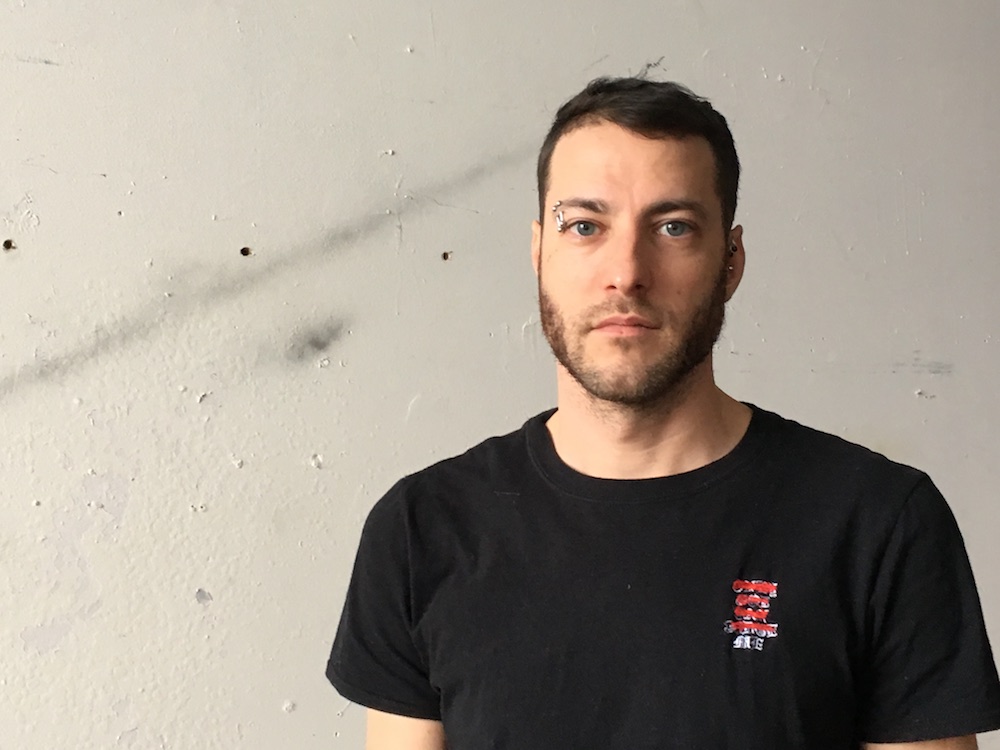Simon Laroche takes on the seemingly dichotomous roles of engineer and artist
Multimedia artist Simon Laroche’s studio is in an unusual state: it’s partly vacant. Two art pieces that usually fill some of the space are missing. One is being exhibited in Kitchener, Ont., and the other recently finished its exhibit in Quebec City.
Laroche, who moved into the studio about three years ago, said the partially empty space lends itself to new projects. “It feels like there’s more room to make more stuff,” he said.
The “stuff” Laroche is referring to can be summed up in a few words: “a systems-based approach to art.” His work incorporates robotics and moving parts to produce installations, interactive shows and performances.
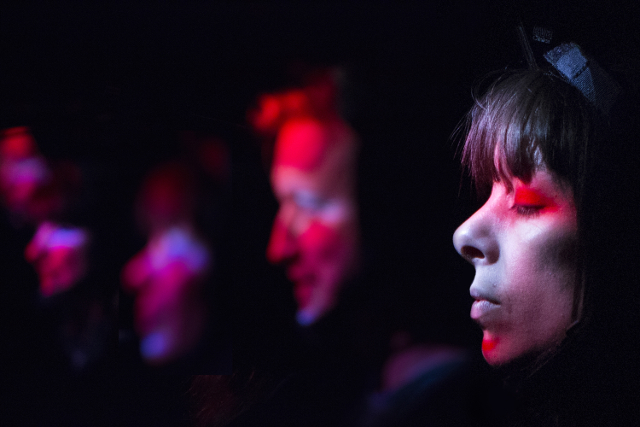
In 2003, Laroche and Etienne Grenier founded Projet EVA, a collective that produces digital art installations and performances. The two met while completing their master’s degrees in communications at the Université du Québec à Montréal (UQAM). They rapidly became friends and began collaborating.
After responding to open calls and requests for projects during the collective’s earlier years, Laroche and Grenier developed a way for their pieces to circulate in different galleries, museums and festivals while the artists produced and conceptualized ideas for other work at the same time.
“[We] envisioned a way to have three operations running at the same time: the circulation of work, the production of a piece and […] the phases where you think about the project, you conceptualize it,” Laroche said. “[The] aim was to have all three of these things running at the same time so we would get more activities.”
As Laroche and Grenier had hoped, Projet EVA’s pieces began circulating more frequently. The funny thing, however, was that some installations toured outside Montreal before being exhibited in the city.
Nous Sommes les Fils et les Filles de l’Électricité premiered in Paris, France, two years ago at La Villette Park for 100%, a multidisciplinary festival. The piece, which is a combination of performance, live participatory theatre and digital art, according to Projet EVA’s website, was also displayed in four Maison de la Culture art centres throughout Montreal about a year later in November 2017. “It actually toured in Europe before coming here,” Laroche said.
Laroche called Montreal’s art scene a “great portal to Europe,” having had several experiences touring small and large works in France, Belgium, Switzerland and the Netherlands.
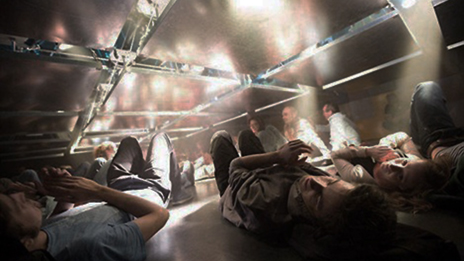
Cinétose was one of the larger projects Projet EVA created that circulated in various locations in France. The electromagnetic installation, measuring 20 feet in length and 30 feet in width, is made of steel sheets and lowers onto viewers mechanically. “It covers the whole ceiling of a venue,” Laroche said. “[Cinétose] marked a change in the way we produce art, making [Projet EVA] envision larger, more complex pieces involving more resources.”
Despite success in Europe, Laroche said Projet EVA is trying to circulate more of their works in Canada as well as work with more Canadian art centres.
Balancing engineering and art
Laroche’s artistic background is based in arts and communications. He became interested in multimedia during his undergraduate degree at UQAM because it was “experimental and open-ended.” However, Laroche moved away from strictly audiovisual platforms when he found projects stopped being dynamic. “Even moving images on a monitor seem too static to me,” he said.
This prompted him to incorporate computer programming into installations, and interactive platforms with moveable, physical components. As an undergrad, Laroche worked as a computer programmer, so he was familiar with concepts like coding, which he later brought into his pieces. This coding know-how helped Laroche incorporate robotics and moving parts into many of his projects.
Perpetual Demotion is a human-feeding robot powered by three motors. It was built for Hedonistika, which was presented at the Biennale internationale d’art numérique exhibition at the Musée d’art contemporain de Montréal four years ago. When viewers stand in front of the robot, it detects movement, locates a face and aligns the spoon to move towards their mouth.
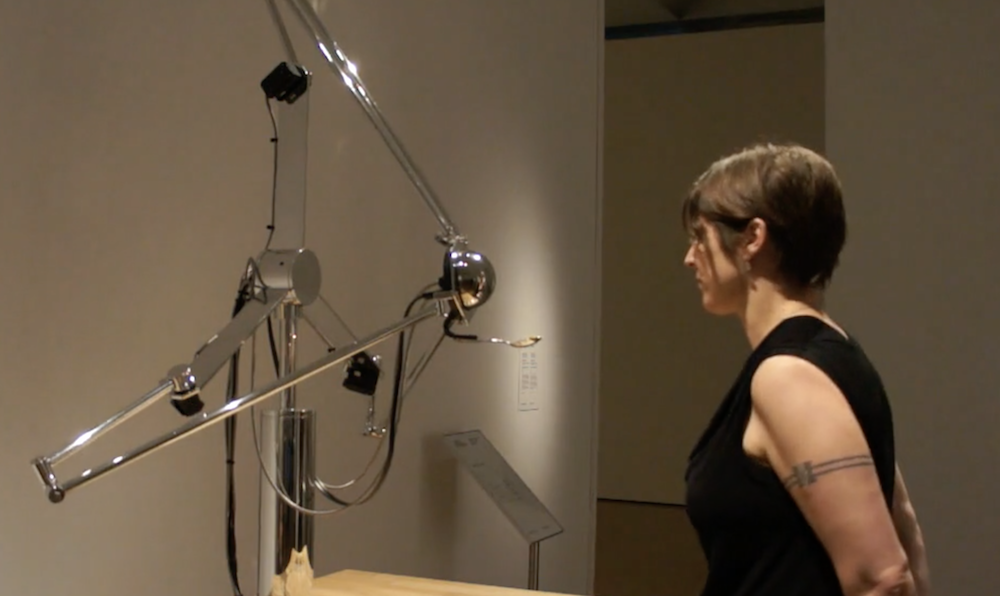
The project required inverse schematics, which involves mathematical functions that undo each other. Laroche turned to YouTube to find experts and videos about the unfamiliar topic. He said the process of learning to build elements of his works can sometimes involve being as “stubborn as possible to figure out how things work [to] reappropriate [them].”
Since Laroche uses “a lot of code that isn’t necessarily developed for the arts,” he tries to figure out what works by creating numerous prototypes. Perpetual Demotion was no exception. He built several small mockups to test out which mechanics would give him the desired effect. This “experimental approach,” as Laroche calls it, is a live, real-time way to test both the ideas he has prior to beginning the project and the ideas that come about while building a project.
Getting to this prototype phase often comes after hours of conceptualizing an idea, researching potential ways to make that idea come to life, and constantly adjusting mechanic and artistic aspects as the piece is being built.
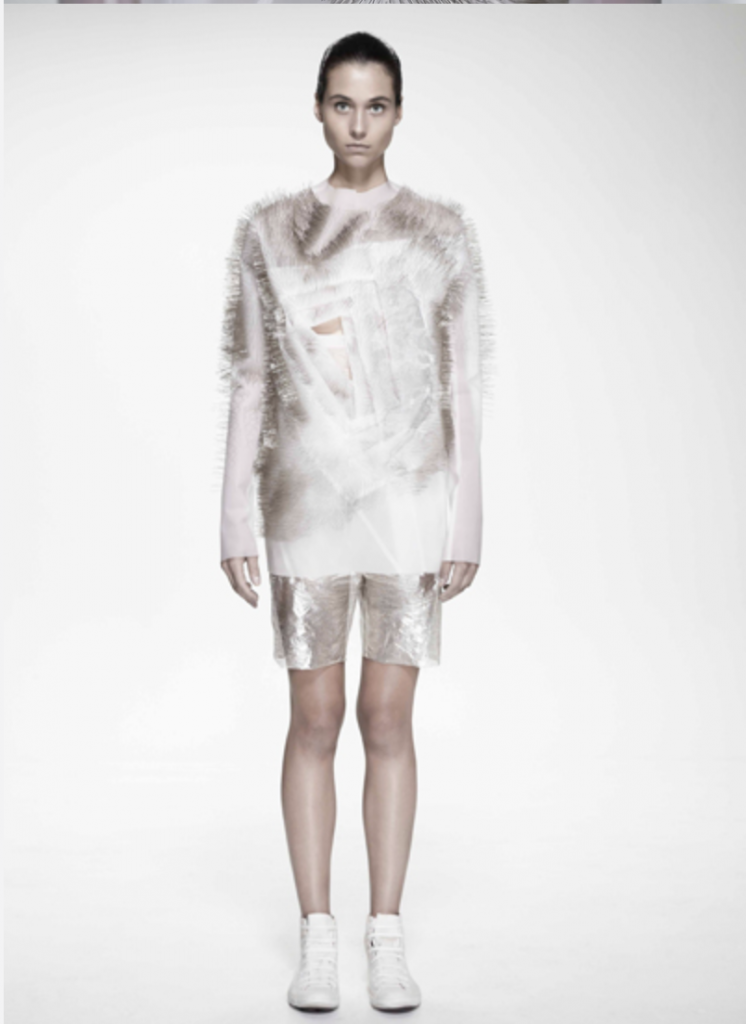
Laroche’s knowledge of mechanics and art allows him to completely understand each component of his pieces. While he often collaborates with other artists, Laroche likes taking on the seemingly dichotomous roles of engineer and artist. “By mastering technicalities of [a project], I can better tune the aesthetics of it,” he said.
In 2013, Laroche collaborated with Ying Gao, a Montreal-based fashion designer and professor at UQAM. The two met while completing their master’s degrees. Laroche remembers being in Gao’s studio as she moved a magnet above some needles and asked him: “How do we do this without holding the magnet?”
Incertitudes was the answer to that question. The pair used Laroche’s knowledge of mechanics to create voice-activated, kinetic garments. Similar to the needles Gao once laid out and moved with a magnet in her studio, the garment is covered in pins that move when spectators speak to it. The pins’ movement creates a dialogue between artwork and viewer.
Teaching at Concordia
Laroche began teaching classes in Concordia’s intermedia and studio arts programs in the early 2000s. While some of the classes have changed names, what hasn’t changed is his devotion to his students. Laroche enjoys exchanging ideas with students, as well as guiding them towards what they want to do in the future. The exchange of ideas that occurs between professor and student furthers Laroche as an artist.
“Even if there’s a difference in knowledge or experience, there’s still this dialogue that comes up and that makes me progress as well,” he said.
Teaching part-time gives Laroche an ideal schedule—he has enough time to balance his professional work with his teaching. “Having one class per year or per semester is great for me,” he said.
When Laroche is teaching a course, he likes to start off with a bit of background in art history and programming basics before proceeding to projects. This way, his students are well-versed in the theory before they begin practical work.
One of the most challenging parts of being a part-time faculty member is that he cannot supervise independent studies courses for undergraduate and master’s students. “There are students I’ve had in first and second year; I know where they want to go and I know where they are at,” Laroche said. Yet, despite having taught some of these students more often than full-time professors have, when students ask him to supervise their work, he has to say no. “It’s kind of deceiving.”
Nonetheless, he has managed to find a way to support students with the help of the Concordia University Part-time Faculty Association (CUPFA). With funding from the association, Laroche can hire students to work with him at Projet EVA. In turn, he can help them with their own ideas. “I want to help students develop their projects,” Laroche said.
Feature photo by Valeria Cori-Manocchio
